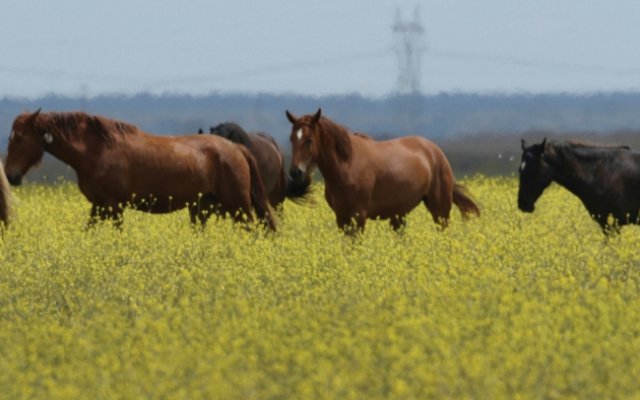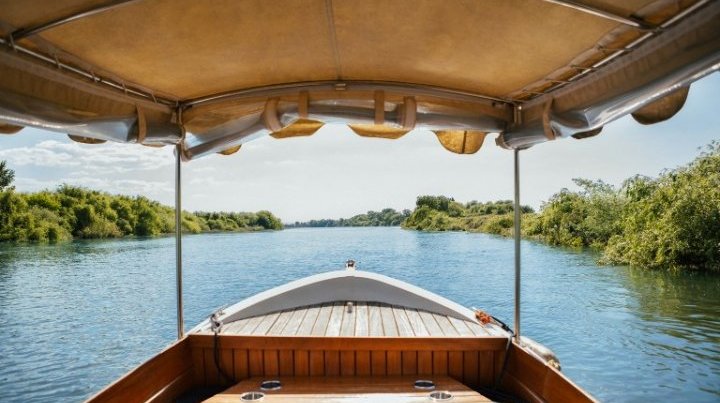CASTRO DE VILA NOVA DE SÃO PEDRO
Distance: 7.3 km; Duration: 3h;
Degree of Difficulty: Very Easy
Trail departure point: Rua das Escolas – Junta de Freguesia de Vila Nova de São Pedro
Coordinates: 39.209335, -8.843206
This itinerary takes place in the surroundings of a fortified town considered to be a treasure of Portuguese archaeology and one of the oldest of its kind in Europe. Numerous artefacts have been found here, including ritual cups, idols and adornments, ceramics and other pieces of incalculable value to archaeology, now held by the Museu Arqueológico do Carmo (Carmo Archaeology Museum). On the ground, we can see the main walled area of the town and various structures, including remains of the rest of the lines of walls that you can explore if you are interested.
This has always been territory sought after for its fertile soil. In the more recent past, Vila Nova, together with the localities of Maçussa and Alcoentrinho (currently Manique do Intendente), formed one of the largest parishes of the region. Under the crusades decree it was taxed an amount of 400 pounds annually at the start of the 13th century during the reign
of D. Dinis, "the Farmer.” This king created free fairs, granted various towns privileges and exemptions and sought to get the entire population interested in farming the land, facilitating its distribution.
At the start of the trail, parking is easy and there is a café. Starting at the small garden at the centre of the locality and with the clock tower on your left, cross the road and practically in front, you have the unpaved Amoreira Street. Walk some 300 meters and turn right, beginning a stretch of 800 meters, which ends on an asphalt road. On this descent, 150 meters ahead, on your left side, you can see a spring. These old springs excavated in the limestone allowed the small local vegetable gardens to be irrigated, the basis of subsistence farming. The entire descent takes place in an ensconced valley and ends at the Maçussa Brook.
Once you reach the asphalt road, turn right and start a short climb of 500 metres until you reach a drinking fountain on your right side with a picnic park and a public washhouse. Here, take the dirt road to your left and continue along the Almoster Valley for some 1,400 meters. Flat section where the rich covering of vegetation supports considerable biodiversity. The landscape is divided into vegetable gardens and well preserved cork oak groves with the occasional flock of sheep and goats grazing amid the scrub and a few vineyards. The sound of singing birds is always in the background and the various species of trees and bushes deserve our admiration. These include the hawthorn (Crataegus monogyna) which, depending on its size, is considered a bush by some people and a tree by others. In spring it sprouts white flowers and later on in the year edible red fruit grows on it.
When you reach a crossroads of rural roads, turn right and start climbing up to the hamlet of Torre de Penalva. This part of the route runs along a waterline where, on the left, we have a dense gallery of diverse riverside vegetation; on the opposite side, we see a cork oak grove, followed by open fields and some brushwood.
Some 800 metres ahead, you will find a road to your left; however, keep going straight ahead for 200 meters more, turning left on to a narrow road that ends near Torre de Penalva. When you leave this area, follow the asphalt road and 70 meters ahead, on your right side, you will see the Torre drinking fountain.
Get back on to the road and go straight ahead, not turning on the first street, but rather taking the next road on your right, then passing a crossroads and continuing straight on for another 300 meters, where you will find a sign relating to the fort.
Here, turn right on to the dirt road, continuing straight ahead for some 400 metres until it peters out into three undefined sections. Choose the one on the right and just a few hundred meters ahead you will see the hillside where the monument is located.
Castro de Vila Nova de São Pedro is located on the highest point of the region, as these types of buildings are almost always located on the tops of mountains that act as natural defences and help with tactical control, thanks to a complete panoramic view over the surrounding fields. Nearby you have the Almoster River, a tributary of the Maior River and the latter a tributary of the Tagus River, which was likely the main communication line. This fortified settlement dating from the Chalcolithic period saw four phases of occupation: first, it was an open settlement; then the first wall was built, later the second line of defence was constructed and still later a new wall was built.
Go back the same way until you reach the asphalt road and here continue straight on for some 200 meters, turning on the first road to the right. When you pass the church, turn right and go down the street for some 20 metres; here, on your right, you will see Casa João Moreira and the Miradouro (lookout), offering great views of the local landscape.
While on the street facing forward to the lookout, follow the street to your left for about 100 meters; when it forks, take the left-hand one and keep going for about another 200 metres. Here, the main road of the town forks and you should take the left one for about 150 meters, then turning left, and at the end of the street turn right. About 100 meters farther on, you will find the garden, the starting point of this itinerary.





